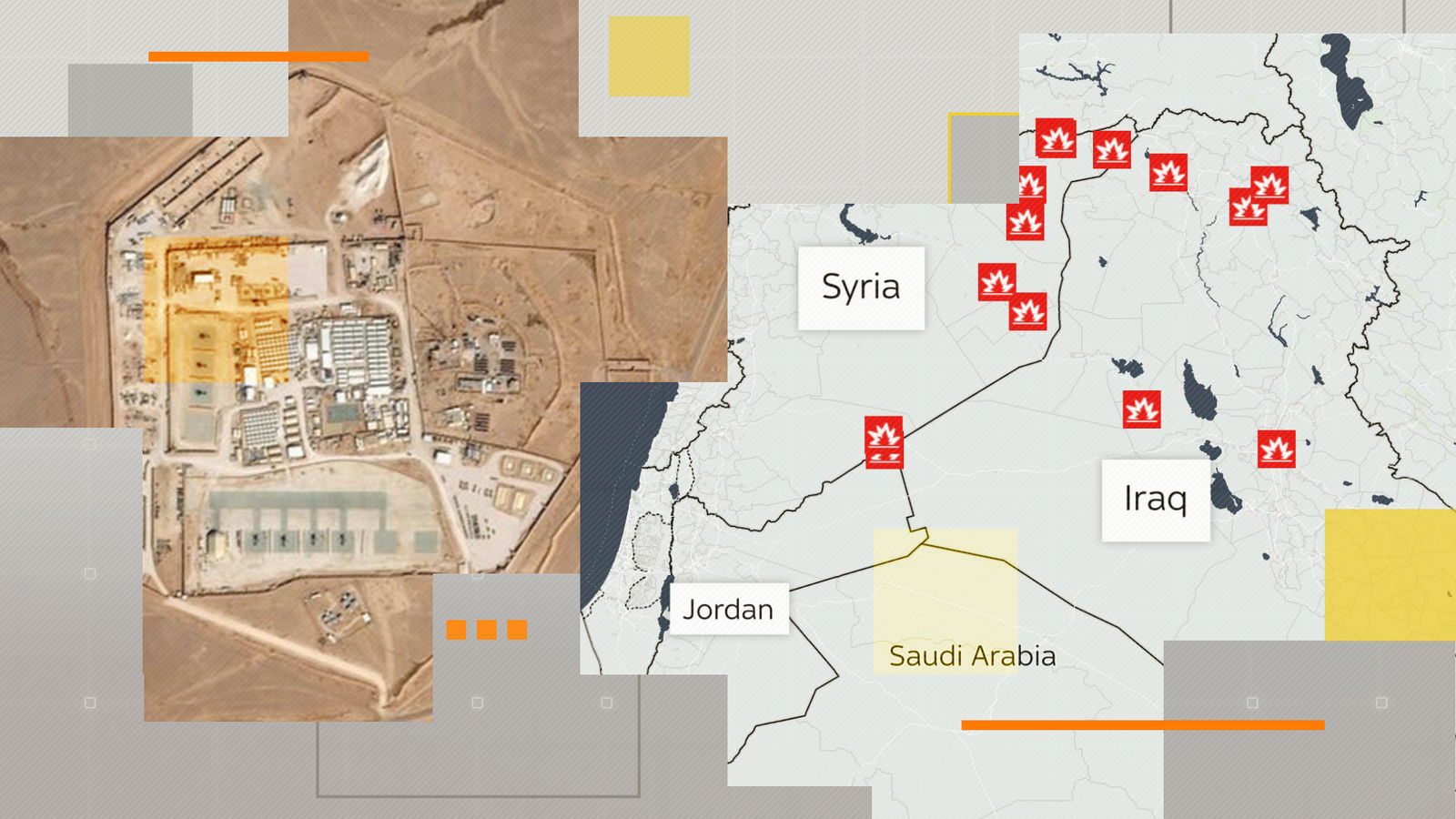Joe Biden has promised the US will “respond” to the attack on Tower 22, which left three US military personnel dead and dozens wounded.
The problem is that the US has already been responding to attack after attack on its bases in the Middle East – and has nevertheless failed to deter them.
There have been more than 160 so far.
Middle East latest: Biden decides on drone attack response
And the US has retaliated to those – the graphic below shows their attacks since 27 October.
They already include strikes against bases operated by the Iranian Revolutionary Guard Corps (IRGC) – the regime’s most powerful military force – rather than proxy militias.
Defence and security analyst Professor Michael Clarke said: “What the Americans were trying to do was be very graduated in their response – always to respond to individual attacks with another retaliation on the place where the attack came from.
Iran and the US were once friends – what happened?
Iranian man charged over plot to kill defector from Tehran in the US
Who are the Iran-backed militia groups carrying out attacks?
“It obviously has led the Iranians to feel that they can keep on pushing America. So, I think the fact American service personnel have been killed has crossed a line.
“The Americans now have got to decide if they need to take a step up in terms of their response.”
Would a response that included sanctions or perhaps a cyberattack really be a step up?
Many Iranian officials are already under sanctions and there is domestic pressure on Mr Biden to go further.
Professor Clarke suggests that another option would be to target Iranian ships in the Red Sea and connecting waters: “The Americans might regard that as a sensible target since they’re all part of the Iran’s attempts to create a crisis for America.”
IRGC fast boats operate regularly in the Strait of Hormuz and have seized oil tankers in the past.
Earlier this month, Iran also announced that its warship Alborz, a frigate, had entered the Red Sea.
There’s also the Behshad.
The ship officially carries cargo but military analysts say it carries out surveillance that has been vital for all the Houthi attacks – another Iranian-backed militia that forms part of the same so-called “axis of resistance”.
Those would be Iranian assets, but still outside Iran. Further up the escalation ladder would be an attack on Iranian territory itself.
That could be limited to the coast, perhaps. Or they could strike the interior – perhaps even on nuclear facilities.
That is the very top of the ladder – and the US would not start there, if only to give itself room to climb in the future.
On Monday, Iran’s foreign ministry spokesperson Nasser Kanaani said that his country “does not welcome the expansion of conflicts in the region”.
And Mr Biden said on Tuesday that “we don’t need a wider war in the Middle East” but he had decided on an unspecified response.
Others would argue that, with the death of US military personnel, the wider war is already here.








